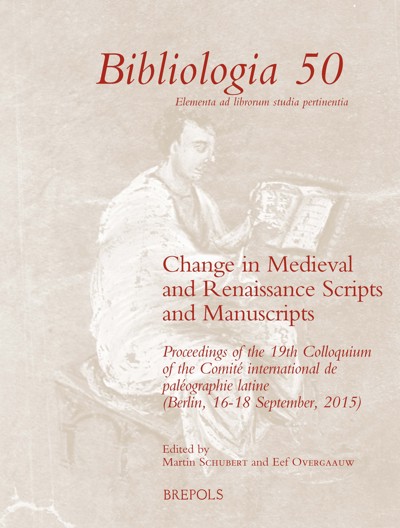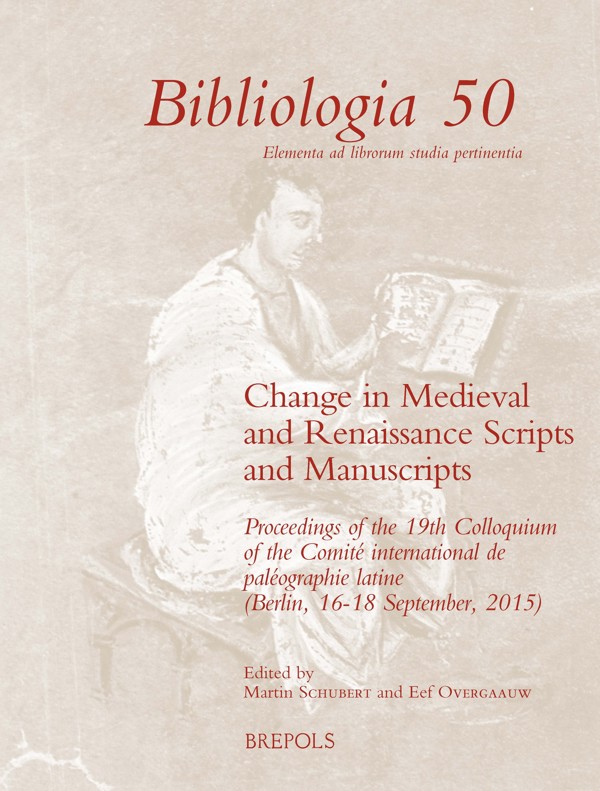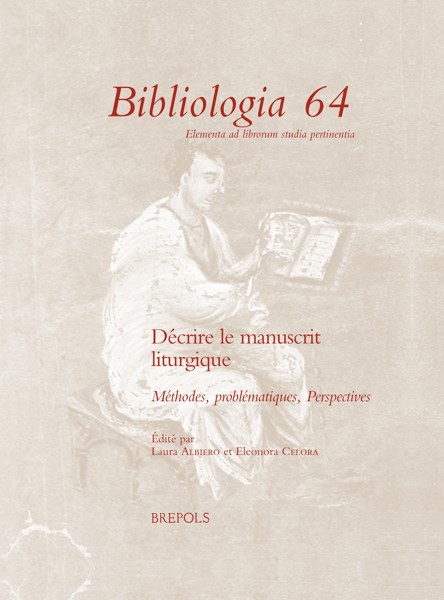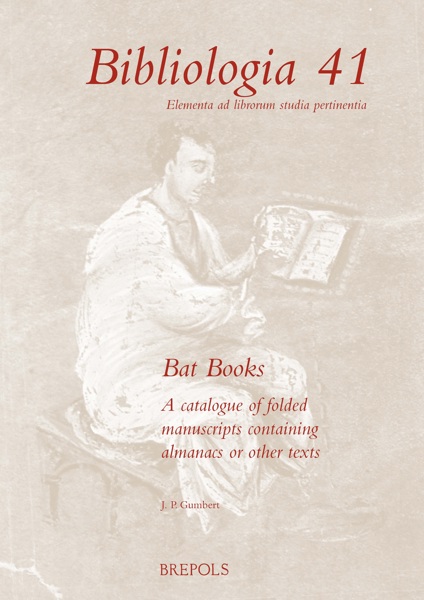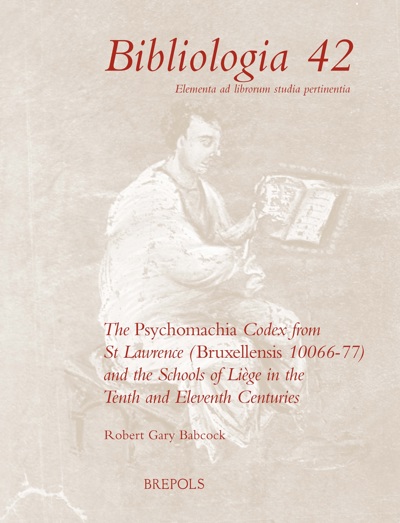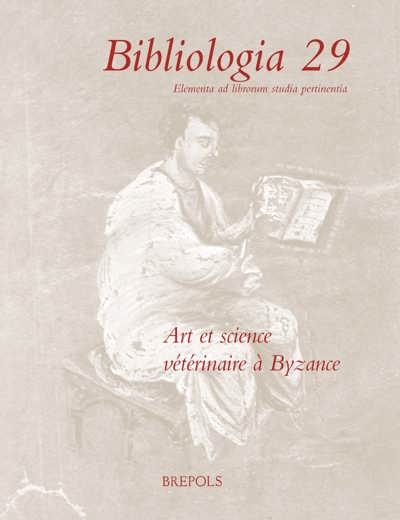
Change in Medieval and Renaissance Scripts and Manuscripts
Proceedings of the 19th Colloquium of the Comité international de paléographie latine (Berlin, 16-18 September, 2015)
Eef Overgaauw, Martin Schubert (eds)
- Pages: 340 p.
- Size:216 x 280 mm
- Illustrations:94 b/w, 8 col., 17 tables b/w.
- Language(s):English, French, German
- Publication Year:2019
- € 95,00 EXCL. VAT RETAIL PRICE
- ISBN: 978-2-503-57875-0
- Paperback
- Temporarily Out of Stock
Eef Overgaauw is Head of Manuscripts at Staatsbibliothek zu Berlin and honorary professor of Palaeography and Codicology at Freie Universität Berlin.
Martin Schubert is researcher at the Berlin-Academy of Sciences and lecturer at the Humboldt Universität Berlin
Palaeographers and codicologists have gradually developed concepts and terms to analyse change in medieval and Renaissance scripts and manuscripts. Some of these endeavour to offer explanatory models, either for specific phenomena or for general trends. Others are essentially descriptive, typological and chronological, referring to implicit (traditional) theories of historical evolution. The papers in this book offer a wide range of palaeographical and codicological case-studies describing and analysing "change". Several papers offer the outlines of a theoretical framework, bringing out the conditions for the evolution of scripts as well as for progress in the production and distribution of texts and manuscripts.
Preface
Teresa De Robertis, Nicoletta Giovè, Come cambia la scrittura
Ainoa Castro Correa, The Regional Study of Visigothic Script: Visigothic Script vs. Caroline Minuscule in Galicia
Peter A. Stokes, Change and Variation in Eleventh-Century English Script
Walter Koch, Schriftwandel bei Notaren in der hochmittelalterlichen Reichskanzlei
Irene Ceccherini, Cursivité et institutions. L’écriture de la chancellerie de France entre la fin du XIIe et la fin du XIIIe siècle
Elena E. Rodríguez Díaz, El origen del libro gótico en los reinos de Castilla y León. La diferente ubicación de las iniciales secundarias y mayúsculas
Vladimir I. Mazhuga, Le changement d’aspect de la page dans les manuscrits juridiques italiens à la période préaccursienne (d’après les manuscrits et les fragments conservés à Saint-Pétersbourg)
Dominique Stutzmann, Résistance au changement ? Les écritures des livres d’heures dans l’espace français (1200-1600)
Martin Schubert, The Invention of Space. Verses and the Line Break in Medieval German Manuscripts
Nataša Golob, Painted Key-Words: Accessing Contents by Images
Laura Albiero, Le bréviaire, de l’autel à la poche. Quelques considérations à propos des bréviaires portatifs
Chiara Ruzzier, Les changements dans la fabrication du livre aux XIVe et XVe siècles d’après les manuscrits des abbayes bénédictines des Pays-Bas méridionaux
Laura Regnicoli, David Speranzi, Mutamenti, continuità e interazioni delle scritture distintive librarie latine e greche nel Quattrocento fiorentino
Martin Wagendorfer, Universitätsakten anders gelesen. Kulturtransfer, Transformation und die Humanistica nördlich der Alpen
Francisco M. Gimeno Blay, Muestrario gráfico del otoño medieval: Ars litteraria y Ars alphabetica de Hartmann Schedel. De Núremberg a Padua
Session APICES
Colleen M. Curran, Standardization Through Hybridization: The Morphology of English Caroline Script
Matilde Silla Sgarbi, Codicologia d’archivio. I più antichi registri di imbreviature dell’Archivio di Stato di Firenze
Renáta Modráková, The Change of Historical Periods. Manuscripts and Scribes from St George’s Convent at Prague Castle in the Thirteenth and Fourteenth Centuries
Marco Antonio Siciliani, Scritture di frontiera. Alcune riflessioni su cultura grafica, luoghi e sistemi di produzione libraria ad Avignone nel XIV secolo
Elisabetta Sciarra, Codici e libri stampati postillati: note di possesso, note di lettura, note di studio nella base dati dei possessori della Biblioteca Nazionale Marciana di Venezia
